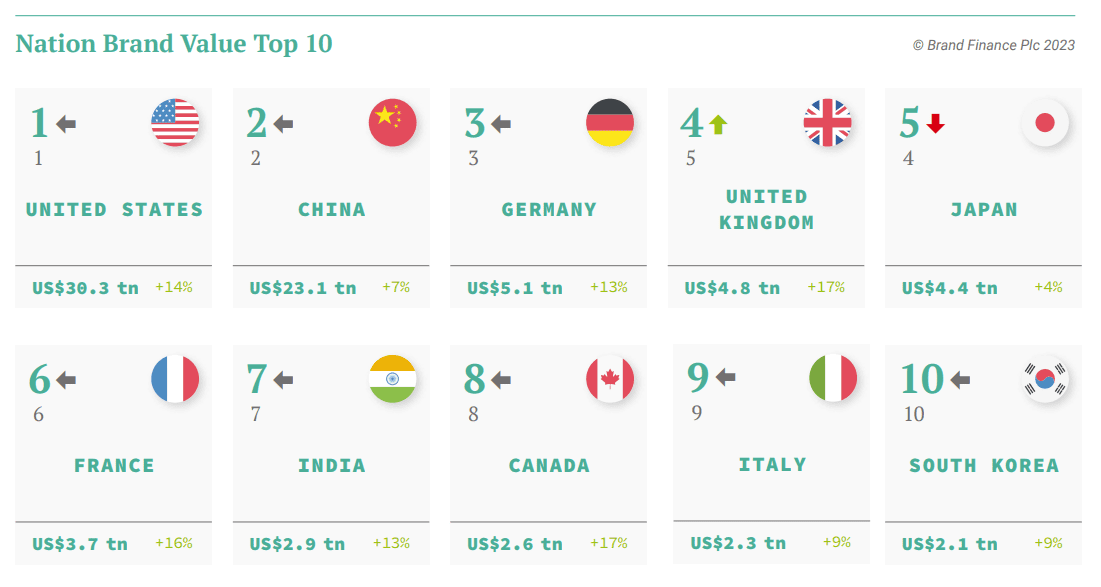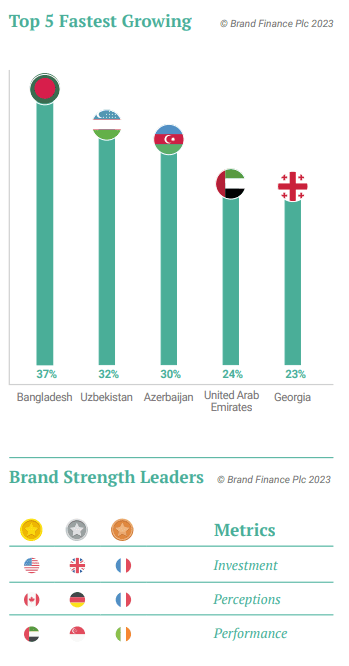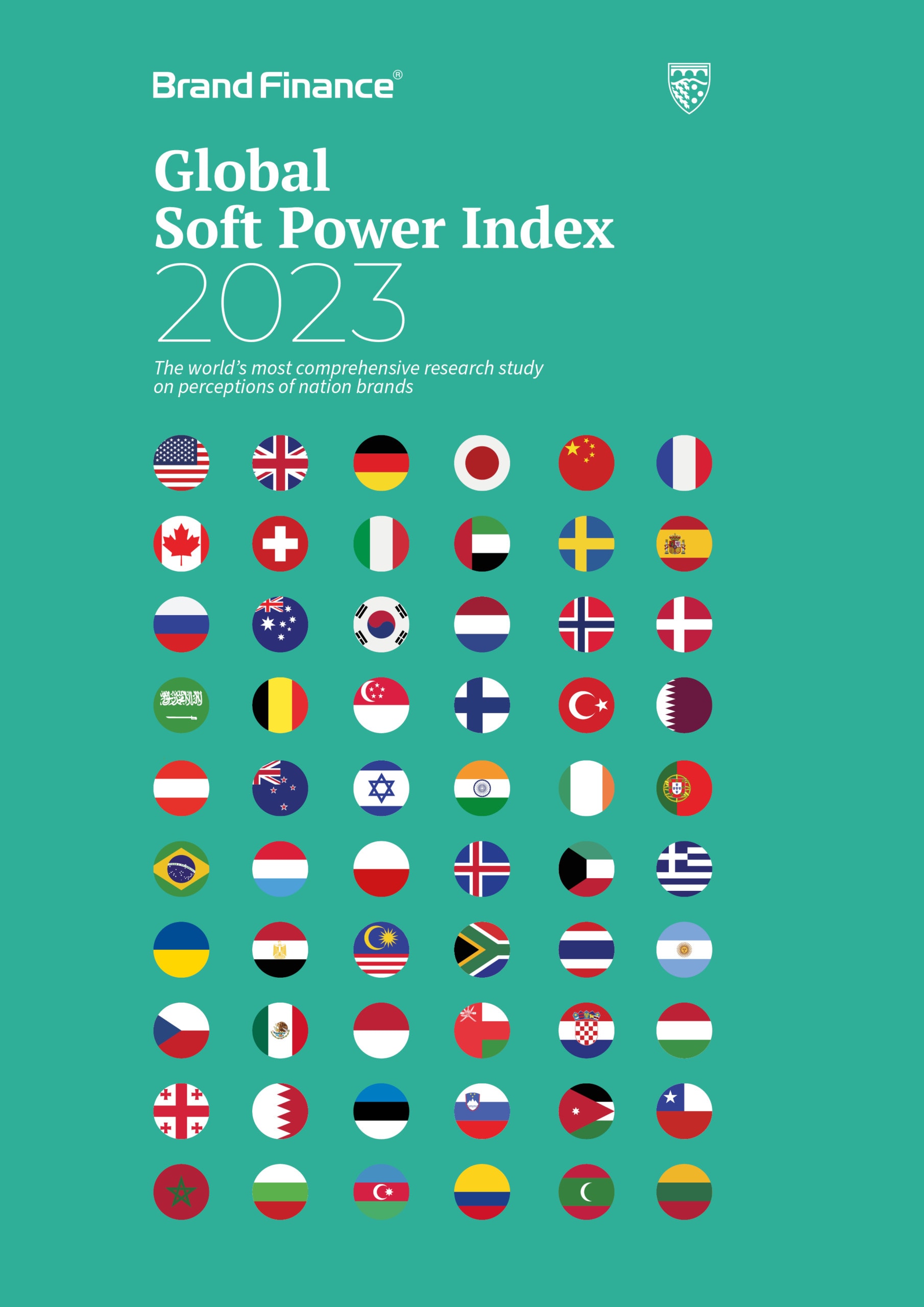
Shanmuganathan
Place Branding Associate,
Brand Finance
What difference does a nation brand make?
Nation branding is about how a country positions and promotes itself. It is an important asset that enables countries to differentiate their economic activity, people, and tourism in a global marketplace. Countries globally are becoming increasingly cognizant of the value of their nation brand as an asset. Understanding the value of a nation brand involves perceptions research and financial analysis.
The strength of a nation brand is affected by its Soft Power perceptions and building a nation’s Soft Power allows to bring economic benefits to a country, driving its nation brand value. Along with the Global Soft Power Index, Brand Finance has been tracking and publishing an annual ranking of the world’s most valuable and strongest Nation Brands for almost 20 years.
How is Nation Brand Value measured?
Brand Finance’s approach to valuing a nation brand is an adaption of the ISO 10668 Brand Valuation standard, based on the royalty relief mechanism employed to value the world’s largest corporate brands. To understand the value of a nation brand we look at two key areas: the financial performance (GDP) of the nation and the strength of the nation in the global marketplace. Whilst it is easier to compare the financial and economic performance of nations, assessing the strength can be a slightly more complex undertaking.
Nation Brand Strength in detail
The Nation Brand Strength, a score given from 0 to 100, allows us to understand the relative strength of a nation in the global marketplace. This plays a crucial role in calculating the value of the nation brand. It is the part of our analysis most directly and easily influenced by those responsible for their country’s nation branding initiatives. Nation Brand Strength is determined through a balanced scorecard of metrics evaluating brand investment, brand perceptions, and brand performance.
Nation Brand Investment looks at what assets the nation brand has compared to competing countries that would help it generate positive perceptions.
The investment pillar includes key metrics across Business & Trade, Governance, International Relations, Culture & Heritage, Media & Communications, Education & Science, People & Values, and Sustainable Future, just like the Global Soft Power Index.
The investment pillar is informed by statistical data derived from reputable public sources such as the United Nations, World Bank, and the Global Innovation Index.
Nation Brand Perceptions are the domestic and international perceptions about the nation brand. The perceptions pillar is based on the results of Brand Finance’s Global Soft Power Index.
Stakeholder perceptions are a central requirement to carrying out an accurate brand valuation and therefore Nation Brand Perceptions account for 50% of the overall Nation Brand Strength. Brand Finance’s Global Soft Power Index results therefore sit at the heart of the Nation Brand Strength assessment and Nation Brand Value calculations.
Finally, Nation Brand Performance looks at how well is the nation brand performing versus competitors. The performance pillar focuses on macroeconomic standing, as well as the four key business areas where the nation brand has the most impact: trade, investment, tourism, and talent.
The performance pillar is informed by statistical data derived from reputable public sources such as the United Nations, International Monetary Fund, and Euromonitor.
The Nation Brand Strength scorecard is designed to mirror the brand-building process. It naturally follows, that if you invest in your brand, you expect to see a return in brand perceptions, both amongst domestic and international audiences. This ultimately leads to an uptick in the nation’s economic activity and performance. For example, investment in the nation brand via improving trade policies or investment in infrastructure can positively impact perceptions towards the nation brand, generating Soft Power.
This in turn can result in increased FDI into the country and improved economic activity driving overall performance.
By maximising Nation Brand Strength across this chain, i.e. investment to perceptions to performance, a nation brand can maximise its positive impact on a global platform and therefore overall Nation Brand Value.

Rapid economic growth can place a nation brand in the spotlight. Bangladesh emerges as one of the fastest growing nation brands in the ranking, recording 37% year on year growth.
The Bangladesh economy is one of the finest examples of remarkable economic development and is the World Bank’s proclaimed model for “poverty reduction”.
As Bangladesh gains global appreciation as one of the fastest-growing South Asian economies, its nation brand sees the highest increase in value and ranking within the 2023 ranking.
Large economies that are characterised by abundant resources to develop and invest in the economy, emerge as leaders on the Nation Brand Investment score. The United States leads with a score of 84.7. Investment towards Business & Trade, International Relations through development aid, as well as Education & Science are the key driving forces behind this score.

Whilst the US leads on Nation Brand Investment, Canada takes leadership on Nation Brand Perceptions amongst both international and domestic audiences with a score of 92.3.
Canada boasts one of the highest living standards in the world driven by a strong economy, culturally diverse population, and one of the best education systems in the world. Strong nation brand perceptions have also resulted in Canada holding the coveted title of the world’s strongest nation brand overall for the second year in a row.
The United Arab Emirates continues to outperform others on Nation Brand Performance score, retaining leadership for the second year, with a score of 83.5. Strategic location between Asia, Europe, and Africa, strong financial reserves, progressive policies on economic diversification, and increased FDI are some of the key factors behind the UAE’s leadership.
The UAE is closely followed by Singapore. Singapore, touted as Asia’s powerhouse, has consistently been viewed as one of the most stable economies in the world driving its score in Nation Brand Performance.
Nation Brand Value and Nation Brand Strength are effective tools to track and assess a nation brand’s performance in a global context. As highlighted, this undertaking goes beyond an assessment of economic strength but also looks at international and domestic perceptions.
Nation brands exist to differentiate and elevate a country in the global marketplace. By measuring and understanding their performance, nation brand management teams can leverage one of their most important assets to further the economic development and strategic goals ofa country in the long run.


